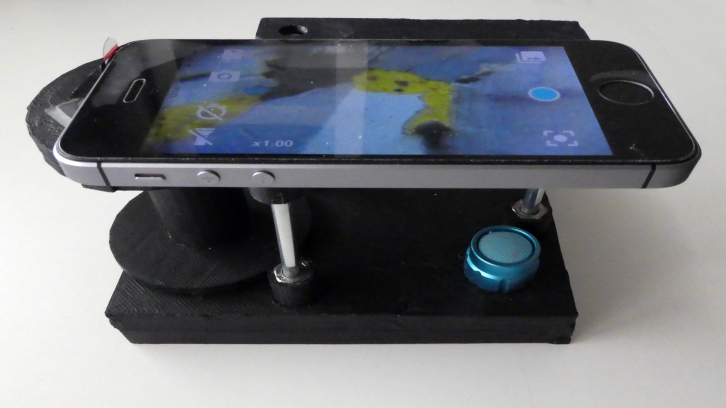The microworld within everyone's reach: a petrographic microscope with a mobile phone body

The invention of the microscope put an end to the physiological limitations of the human eye. A window was opened to observe the microworld. The petrographic microscope, widely used in Geology, but also in other disciplines such as Archeology, Biology, etc., is a tool whose minimum cost of 6000 euros is a barrier to acquiring it on a personal basis. It is an instrument relegated to laboratories of educational and research institutions. Researchers from the UAB, in collaboration with a spin-off from the Italian Institute of Technology, have developed a low-cost construction system with a mobile phone, a type of micro-lens and polarizers. Its use, they say, is easy, offers good quality images and achieves magnifications of up to 40x.
In collaboration with Smart Micro Optics, we have recently published an article in the Microscopy Research and Technique Journal about the setting up of a petrographic microscope that works through an adapted smartphone. Smart Micro Optics is a spin-off of the Italian Institute of Technology that produces tools to explore the micro-world, through a family of innovative and affordable products in the field of microscopy, electronics and micro-optics. It is from there that we envisaged the idea of using these micro-lenses in the field of petrographic microscopy.
The petrographic microscope is a very popular tool in the Earth Sciences field in terms of both educational and research activities. Alongside its application in Geology, it is also proving useful in other fields, such as Material Science, Chemistry, Archaeology or Biology. However, it is relatively expensive (a basic microscope costs a minimum of € 6,000) and therefore it is not generally acquired by individuals, it is rather acquired by educational and research institutions to equip their laboratories. Reducing its cost opens up doors for individuals or institutions with limited budgets to get it.
In the recently published paper, we present the assemblage of a low-cost device that combines the use of a smartphone, a Blips microlens and polarizers. The device is able to cover all the main functionalities of a conventional petrographic microscope with an acceptable magnification and image quality. Once assembled, the imaging device is ready for operation: the light intensity can be regulated, the piece of polarizing film can be removed or inserted to switch between the PPL and XPL modes and the stage can be rotated to observe the different extinction positions in XPL similarly to a conventional petrographic microscope.
Left: Optical image obtained with the new device in crossed polarized mode. A basal section of a zoned pyroxene and plagioclase can be observed. Right: Macro, micro and ultra Blips lenses.
The system is cost-effective, very simple to use and has a level of performance that compares to a conventional petrographic microscope at its lowest magnification setting (40x). For many studies, this level of magnification suffices.
Lluís Casas1 and Roberta Di Febo2
Universitat Autònoma de Barcelona.
1Geology Department.
2Department of Sciences of Antiquity and the Middle Ages.
Lluis.Casas@uab.cat ; Roberta.Difebo@uab.cat
References
Di Febo, R, Casas, L, Antonini, A. A smartphone-based petrographic microscope. Microsc Res Tech. 2021; 1– 8. https://doi.org/10.1002/jemt.23697


